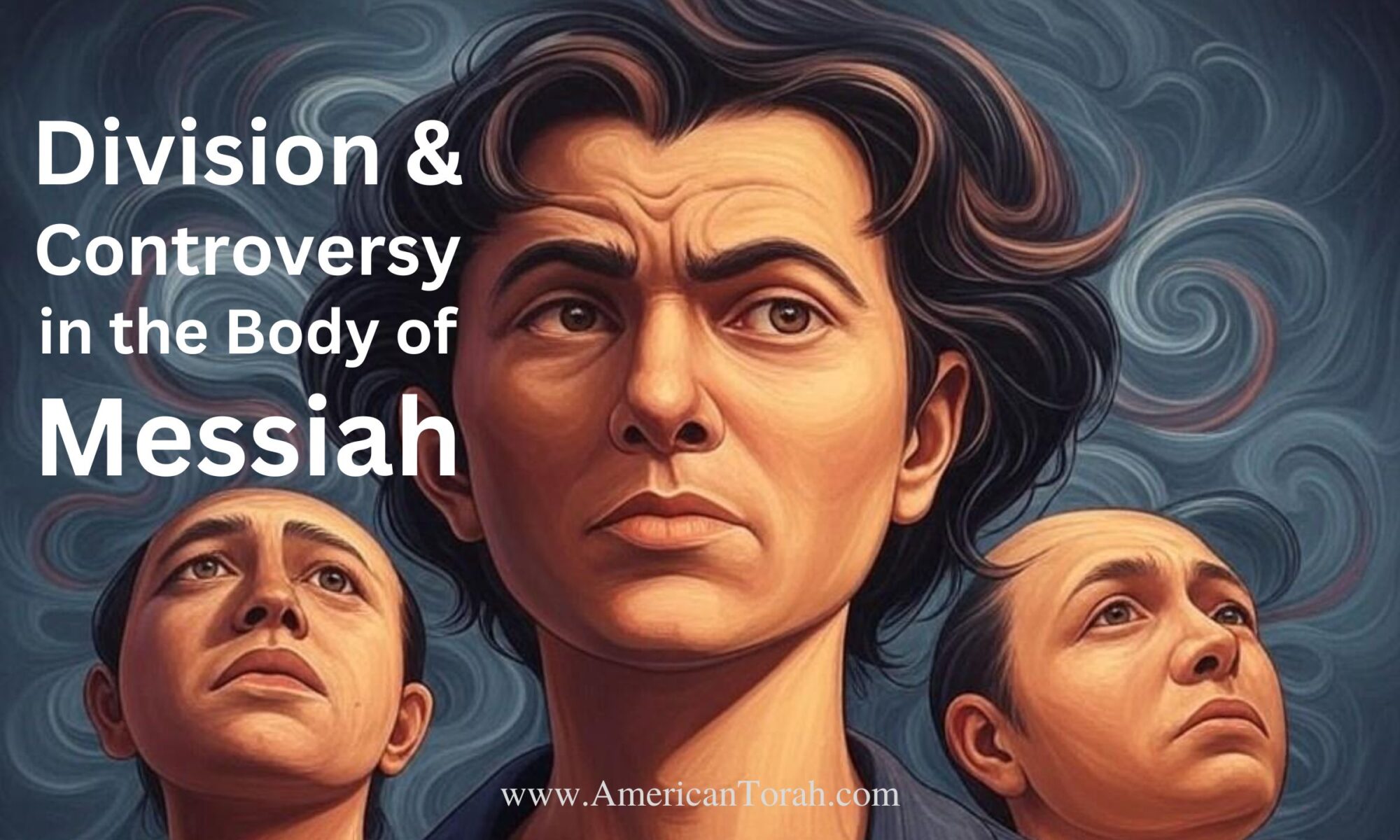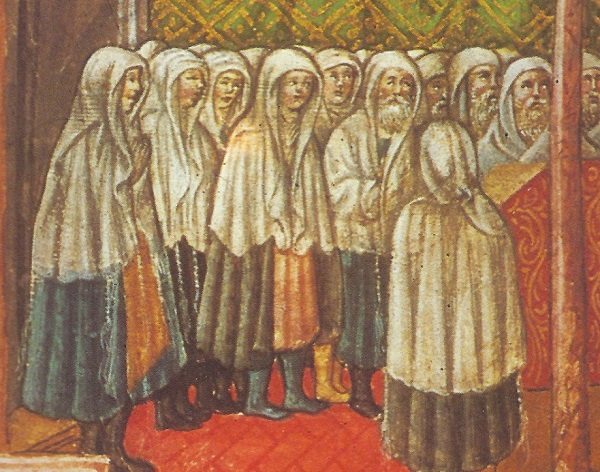This isn’t a how-to article. I’m not going to tell you how to have a happy or fulfilling marriage. Marriage advice is vital. No matter how smart or “experienced” you think you are, you can’t figure it out all on your own. You need help.
That’s not this. This is more of a “how-did” kind of article. Good, bad, or ugly…this isn’t about managing the dynamics of person-to-person relationships. It’s about categories of marriage that nobody else seems to want to talk about.
That’s understandable. In modern America today, for the most part, a man and a woman date, get engaged, and get married. That’s pretty much how everyone does it. (For the moment, set aside the world’s wickedness and rare outliers like surrogates.)
But I’ve got some foreign and uncomfortable news for you: Modern America is an anomaly. Most people throughout history–most people in the rest of the world right now–don’t do marriage the way we do. That includes the ancient Hebrews who wrote the Bible and for whom it was written.
Marriage Is Central
The concept of marriage is central to God’s portrayal of his relationship with his people. Adam was made in his image, and from Adam, God extracted Eve, making the two together a more complete image of God than either one separately. Over and over, he describes his relationship with his people as a marriage.
The wedding feast…The bride of Christ…Idolatry is the same as adultery.
If God uses marriage as a metaphor of his relationship with us throughout the Bible, it seems to me that it’s important for us to understand how the Bible portrays marriage.
That’s not to say that every marital arrangement in the Bible is a pattern we ought to follow. The Bible doesn’t hide its characters’ bad choices. In fact, it frequently–almost always–highlights them in order to give us examples of what not to do.
But that’s also not to say that every marital arrangement in the Bible that doesn’t conform to our cultural expectations of right and wrong is actually wrong. God doesn’t care about our cultural standards. He communicates with us where we are, but he doesn’t conform his moral standards to ours. If God says something is morally acceptable, then it is. If he says it’s not morally acceptable, then it’s not. Our preferences carry no weight.
God determines right and wrong. We don’t.
It’s tempting to think that God merely “winked” at the sinful nature of foreign things like concubinage and polygamy, which appear on the surface to be unfair to women, because the ancient Hebrews didn’t know any better, but that was never a consideration for any of the laws that he gave. God didn’t hesitate to give a law against making and worshiping statues of him, even though the Hebrews obviously didn’t know that they weren’t supposed to do that. They struggled with idolatry for another thousand years after Sinai, so suggesting God didn’t outright ban any of these marital arrangements only because the Hebrews wouldn’t have understood is absurd.
Slavery…bride price…capital punishment…polygamy…genocide…. Like it or not, these are things that God allows in his Law under some circumstances, and our gut feelings about how right or wrong they are is completely irrelevant to the reality of their rightness or wrongness.
With that understanding, I’d like to describe seven marital arrangements that you will encounter while reading the Bible, especially the Old Testament. Not because I think we need all of these arrangements now, but because I don’t think you can fully understand the Scriptures without understanding the culture and mindset of the people who wrote them. I am neither promoting nor condemning any of these practices. I’m just telling you how marriage used to work and what God allows in his Law. “Allows” does not equal “desires”. “Allowed” does not mean “ideal”.
- Betrothal
- Free Marriage
- Concubinage
- Levirate Marriage
- Handmaid Concubinage
- Slave Marriage
- Captive Concubinage
Betrothal is somewhere between our “engagement” and marriage. Free Marriage is closest to what we call “marriage” today. Levirate Marriage is tied to life in the land of Israel. The other four are all variations of concubinage. I’ll explain what that means later, but it’s important to know that Biblical Hebrew doesn’t have a separate word for any of these, except perhaps for “concubine”, and that word isn’t always applied to concubines. In fact, it doesn’t have specific words for marriage or wife at all.
The Hebrew word for “wife” used in the Bible is ishah (אשּׁה), which really just means “woman”. Except for the Levirate Marriage (yabam / יבם), there is no single word for marriage or marry. For women, the Bible uses phrases like “become a woman” or just “become”. For men, it most often says “master”. For readability, almost all English translations render these terms as some variation of “wife” or “marry”, depending on the context. That’s fine as long as the reader knows this, but if you don’t, I think it can often lose meaning or gain unintended meanings.
The differences between these marital arrangements are fuzzy and often overlap. A captive woman might become a handmaid to a Hebrew wife and then be given to the husband as a surrogate. A concubine might be a man’s only wife and if he dies childless, she might become a levirate wife to his brother. It can be complicated.
The ancient Hebrews probably didn’t categorize their relationships in the way I do below, but I think applying labels and descriptions will help the modern Bible student understand what he’s reading in the Scriptures.
Betrothal
Betrothal is similar to what we think of as engagement, but wasn’t so easily broken. In fact, betrothal was considered tantamount to marriage and could only be broken by a divorce. A woman who was betrothed to one man and had a sexual relationship with another would be guilty of adultery.
A betrothal would begin when a man and woman (and her father) agreed to marriage. Under normal and ideal circumstances, the man would give her and her family a bride price–a substantial gift that would likely be shared between the bride and her father or eldest brother. The woman’s family would reciprocate with a dowry of land, livestock, or some other tangible form of wealth. If her husband ever abandoned or divorced her unjustly, her family would probably try to get her dowry back from him.
Joseph’s betrothal to Mary (Matthew 1:18-19) is an example. The primary laws governing betrothal (apart from to whom you are allowed to marry) are in Exodus 22:16-17, Deuteronomy 20:7, and Deuteronomy 22:23-29.
Free Marriage
A free marriage is one in which a man marries a free (not a slave) woman and receives a dowry as part of the marriage agreement. Although we don’t consciously think of bride prices and dowries, this is what we usually have in mind when we talk about marriage.
If the man paid the woman and her family a bride price and did not receive a dowry in exchange, then she would probably be considered a concubine instead. Recall the story of Jacob’s marriages to Leah and Rachel. He agreed to work seven years for each of them, and if that had been the full transaction, they would have been concubines instead of full wives. When Jacob suggests that it’s time they left his father-in-law, both of the sisters replied by saying “Our father sold us and devoured our money”. They were complaining that Laban had sold them to Jacob for labor and had used up their dowry for himself. Fortunately for them, God intervened and miraculously extracted their dowry from Laban in the form of striped and spotted sheep, ensuring that they were free women. See Genesis 31.
Abraham’s marriage to Sarah, Isaac’s marriage to Rebekah, and David’s marriage to Abigail are all examples of free marriage.
Concubinage
In short, a concubine is a wife who is also a purchased slave, usually belonging to the man to whom she is married. In many ancient cultures, such as the Greek, a slave girl could be used by her master however he saw fit, including for prostitution, but that kind of behavior is forbidden by Torah.
If a man owned a female slave who was married to someone else, usually another slave, and if he had sex with her, then he could be executed as an adulterer. A man could take any of his unmarried, unbetrothed slave girls to be his own concubine, but that would become a permanent relationship. She would be his wife, and he couldn’t then toss her aside or give her to someone else like a party favor.
The primary difference between a concubine and a free wife was her legal/economic status as a slave. She had an added layer of economic obligation to her husband that a free wife did not. This had a huge impact on her social standing and on her options if he were to abandon or divorce her, but–contrary to popular mythology–it did not change the fact that she was his wife. She did not stop being a slave when she became his wife, nor did she stop being his wife just because she was also a slave. God required that he provide for her in the same way that he provided for a free wife. See Exodus 21:10.
The children of a concubine did not inherit her status as a slave if her service was owned by her husband directly, but probably would not be able to inherit as a firstborn unless he had no children by a free wife.
Abraham’s marriage to Keturah (Genesis 25:1; she was not the same as Hagar) and the unnamed Levite’s marriage to the unfaithful woman who was murdered (Judges 19) are examples of concubinage.
Levirate Marriage
The word “levirate” isn’t related to the tribe of Levi. It comes from a Latin word that means “brother-in-law”. In this type of marriage, if a man married a woman and then died without having any children, one of his brothers was to marry his widow and their first-born son would become the legal heir of the deceased. The woman was fully a wife to her new husband, just as she had been to her late husband.
Levirate marriage existed to ensure continuity of inheritance in the land of Israel. In Biblical language, a “name” is more than just a label. A person’s name is their character, reputation, faithfulness, and influence in the community. The story of Zelophehad’s daughters in Numbers 27 and 36 shows that a man’s inheritance in God’s promises is an important part of his name, and the levirate marriage is one way that God ensures his name isn’t lost from Israel.
Exactly how this kind of marriage played out in real life is difficult to discern from historical records, including the Bible, but we can extrapolate a few things from the limited information we have:
- The deceased’s brother would inherit his land if he died unmarried and without any children, but the brother couldn’t simply take the land if the man had been married and was still childless. In order to take over the land, the brother needed to marry the widow and produce an heir for the deceased. The land would then belong to that heir when he came of age, so the brother would only have control of the land for that period of time. His other children would divide his original inheritance among themselves after his death, while the firstborn of his brother’s wife would be the sole heir of his brother’s estate.
- There were no exceptions for a man who was already married, so this could result in conflict and complications in his house. A second wife doesn’t just add a second relationship, because she will have to be integrated into the whole family.
- The widow might also come with obligations to her family, including any stipulations that might have been included in her marriage agreement.
- The deceased’s brother could refuse to marry the widow but such a refusal would cost him honor and social standing. The levirate obligation would then pass to another brother.
- If the deceased had no brothers or none of his brothers were willing to marry his widow, it seems from the story of Ruth that more distant male relatives might have the option to marry her and produce an heir for the deceased, although that isn’t explicit in Torah.
Tamar’s marriage to Judah’s three sons (Genesis 38:6-14) and Ruth’s marriage to Boaz (Ruth 3-4) are examples of levirate marriage. See Deuteronomy 25:5-10 for the laws governing levirate marriage.
Handmaid Concubinage
Female slaves weren’t only purchased as concubines. Frequently they were purchased as laborers or as another woman’s personal maidservant, also known as a handmaid. The mistress of such a slave could give her to her husband as an additional wife–usually because she was unable to conceive or bear any children of her own–but this didn’t remove the economic obligation of the slave to her mistress. Hence Abram’s response to Sarai in Genesis 16:6 when she complained about Hagar’s behavior: “Look, your servant is under your authority; do to her as you please.”
A wealthy man’s house could get quite complicated if he had multiple wives, each with their own handmaids. Each wife would constitute a sub-house within the house of the patriarch, and each handmaid and her children would be a sub-house within the house of her mistress. The children of the handmaid were counted as the children of the mistress in some legal sense that’s difficult to make out from scripture, but treated as children of the handmaid in household practice. As with the children of a simple concubine, any sons of the handmaid would likely be passed over as the firstborn in favor of a son born to a free wife, if there was one.
Abram’s marriage to Sarai’s handmaid Hagar (Genesis 16:1-4) and Jacob’s marriages to Rachel’s handmaid Bilhah (Genesis 30:1-5) and Leah’s handmaid Zilpah (Genesis 30:9-10) are examples of handmaid concubinage.
Slave Marriage
In God’s Law, the master-slave relationship takes precedence over the husband-wife relationship. If a man marries his female slave, she becomes his wife, while remaining his slave. If a master gives his female slave to a male slave as his wife, they both remain slaves, and their children will belong to their master.
This is probably one of the most difficult elements of God’s Law for modern Americans to accept, but we don’t get to define right and wrong. That is God’s purview alone.
God requires that Hebrew slaves be set free in their seventh year, but non-Hebrew slaves and their children can remain slaves in perpetuity. If the male slave above is a Hebrew and set free, while the woman is not a Hebrew or has not reached her seventh year, she would not be able to leave with him.
At that point, he can decide between three options:
- He can walk away, leaving his wife and children behind.
- If his slave-wife is a Hebrew, he can wait for her to reach her seventh year, so that she and her children can join him in freedom.
- If she is not a Hebrew or if he doesn’t want to wait for her seventh year, he can choose to remain with his master for life.
I’m not aware of any specific examples of this kind of marriage in the Bible, but it is described in Exodus 21:2-6 and Deuteronomy 15:12-17.
Captive Concubinage
Scripture records numerous instances in which Israel captured the women and children of an enemy people. Although this sounds like a horrible thing, the alternative is that they be abandoned to pagan captors, who did not have God’s instructions on how to treat slaves, or to probable starvation. The most humane thing to do after a war in which all or most of the enemy’s men have been killed, is to take the survivors under your protection, and the only practical way to do that is to put them to work.
Many (most?) of those survivors would become handmaids or field workers, but an Israelite warrior also had the option of marrying a newly widowed or unmarried woman. This would make her a captive concubine. He was not allowed to take her immediately, though. In Deuteronomy 20:13-14 and 21:10-14, God gave instructions intended to add a layer of protection for everyone.
Her new master was required to shave her head, trim her nails, and wait thirty days before he could marry her. This gave her time to mourn her family, time to know if she was pregnant or sick, and time to evaluate her character. If, at the end of that time, the man realizes that he let his passions overrule his good sense, or he changes his mind for some other reason, he is required to set her free. He humiliated her in this process and the recompense is that she had shelter in his house for at least a month and cannot then be made a slave to anyone without her consent. She was free to remain in Israel as a widowed sojourner or make her way to some other land or relatives if she had any.
Although I don’t believe the Bible gives any specific details of these relationships, the sacking of Shechem in Genesis 34:29 and the remnant of Midian in Numbers 31 show two instances when a large number of women were captured in war, some of whom almost certainly became concubines to the victors.
Shadows of the Divine
As I mentioned earlier, throughout the Bible, God uses marriage as a metaphor of his relationship with his people.
Since we are most familiar with the concept of the free marriage, it’s relatively easy for us to understand that metaphor. We are the “bride of Christ”, chosen and betrothed, waiting for the marriage supper of the Lamb. But it’s easy to miss the exchange of gifts: the bride price of the Son’s life and the dowry of gold, frankincense, myrrh, spikenard, and spices. These seem like paltry tokens compared to what we were given, but there is no requirement that the dowry and bride price necessarily have to be of equal value. One could say that we give him our lives in exchange for his, but dedicating our lives to him is the marriage itself, so I don’t think that can be considered a dowry.
When we were transgressors, we were subject to the condemnation of the Law, debtors to the Law under a burden we could never pay. He betrothed us to him while we were still hopelessly in bondage, but then he forgave our debt and redeemed us from bondage so that we could be a free bride.
The freed slave who loves his master and his family and binds himself permanently for their sake of his family. This is connected to the believing spouse in 1 Corinthians 7:14 whose family is sanctified to God because of his faith.
All of the laws governing betrothal, marriage, and servitude in scripture are shadows of greater things designed and implemented in heaven. The shadows are patterns intended for our enlightenment. By studying God’s instructions for marriage–even those marital arrangements that aren’t practiced in our culture–we can learn more about him, ourselves, and our relationship to him.













 God commands quite a few things in Torah that don’t set lightly with most Westerners today. If two men are fighting and the wife of one of them rescues her husband by striking or seizing the other man’s testicles, should we cut off her hand? If a man is caught with another man’s wife, should we drag them both out to the city gates and stone them to death? Should we execute rebellious teenagers?
God commands quite a few things in Torah that don’t set lightly with most Westerners today. If two men are fighting and the wife of one of them rescues her husband by striking or seizing the other man’s testicles, should we cut off her hand? If a man is caught with another man’s wife, should we drag them both out to the city gates and stone them to death? Should we execute rebellious teenagers?